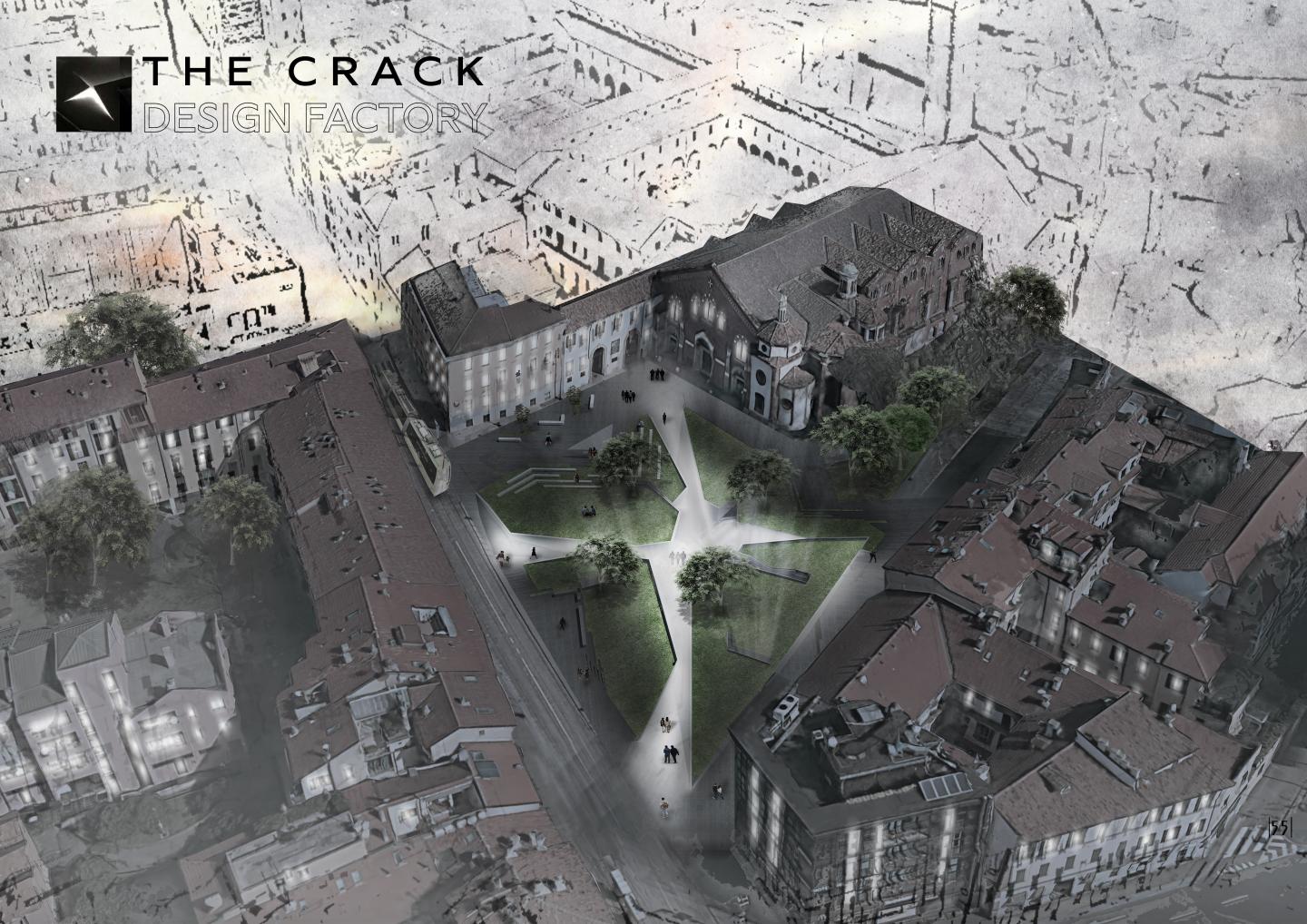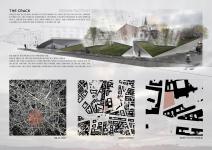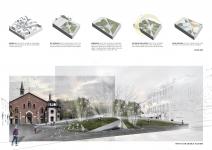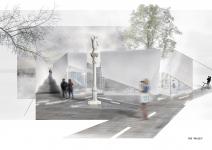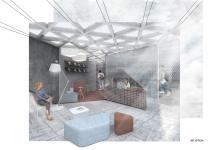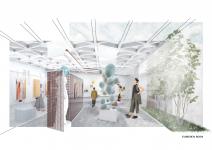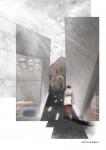THE CRACK
Design Factory
Milan is one of the most desirable places for young people who get inspired by Italian culture and want to develop their skills especially in the field of Fashion, Design and Architecture. The site of the Design Factory, piazza Sant'Eustorgio, is situated in Navigli district, full of cultural events and a lot of landmarks - the Basilica of Sant'Eustorgio.
In the past it was important place where people gathered before religious and social events. Nowadays it has similar function, part of it is a green area for recreation or a transit zone.
Proceeding of the needs of the visitors, the aim of the project is to preserve the green area and the silhouette of the old architecture. Therefore the new building is designed to be semi-underground which forms different kind of spaces – underground/above ground, indoor/outdoor.
Reference: As main symbol of Italians cities are the piazzas, the beating heart of every town. Different in characteristics as big/small, intimate/dramatic, old/new, they all have something in common - their civic and symbolic importance, they’re the physical and spiritual center /marked by monument or fountain/ for the surrounding buildings and intersections of streets.
Morphology: Designing the form was a process intertwining several aspects:
From functional point of view, the two diagonal paths made over time, crossing the area are preserved as a direct connection to the basilica, shortcut for the passersby and a symbol of the cross/the basilica/.The corners formed by the intersection of the two diagonals are lifted up/some edges higher from others/. Two corners in the periphery are raised as well and used for secondary entrance and tram stop.
From philosophical point of view the morphology is connected to the reference mentioned above. The site is a piazza surrounded by buildings and the same concept is repeated in the new built space, in other words a micro is created in the macro system. The tiny irregular streets – ramps and stairs going through the site, following the diagonals, splits the area into four parts. These parts are the lifted corners in which are placed indoor spaces, playing the role of the buildings surrounding the square. Last but not least, the piazza is formed in the center between the indoor spaces, where the “tiny streets” cross each other and Saint Peter of Verona Monument is placed in the middle.
From more abstract point of view morphology could be treated as a crack in the earth. The powerful energy of the place fissures the earth and underneath is revealed the core – a place of liveliness and emotions, a world of art. That feeling is strengthened by additional effects of lights along the cracks which reminds of lava going through them.
Sun analysis and planting: In regard to the morphology, tinier “cracks” are designed for contributing natural upper lightening. The existing trees are placed in that cracks, inserting nature in the interior spaces.
Functions:
Indoor:
Functions of the building are separated in the four parts connected in between: workshop spaces and commercial spaces with exhibition halls. On the main level ±0.00 are situated reception, cafe, bookshop, exhibition rooms for temporary and permanent exhibitions; workshop rooms for Fashion, Design and Photography; storages; WC rooms; elevator and staircase which leads to level -3.30 where are situated storages and machine room.
Outdoor:
The piazza connects all indoor spaces. Outdoor co-working area, water mirrors, triangle structure for planting and seating /corresponding to the triangle raster and openings of the façade/ are designed.
The square in front of the basilica is preserved with enough space for religious events like the Epiphany celebration which took place there every year.
Amphitheatre: Place for outdoor performances with terraced seating on one of the “hills” are designed /reference - Italian symbol – Colosseum/
Materials:
Outdoor flooring: linear dark and more rough stone tiles are in contrast with the grass and the smooth light facades with triangle raster. The tiles orientation in the intersection point of the paths forms the shape of a star, symbol of the star on the peak of the basilica’s tower.
2020
2020
- Monolithic concrete construction with ribbed slab
- Green roofing drainage system
- Optimal natural lightning through the "cracks"
- Existing trees are preserved and situated in the "cracks"
- LED lightning along the ramps/stairs, thus the feeling for lava going through the "cracks" is strengthened
Katerina Rangelova
Favorited 1 times
